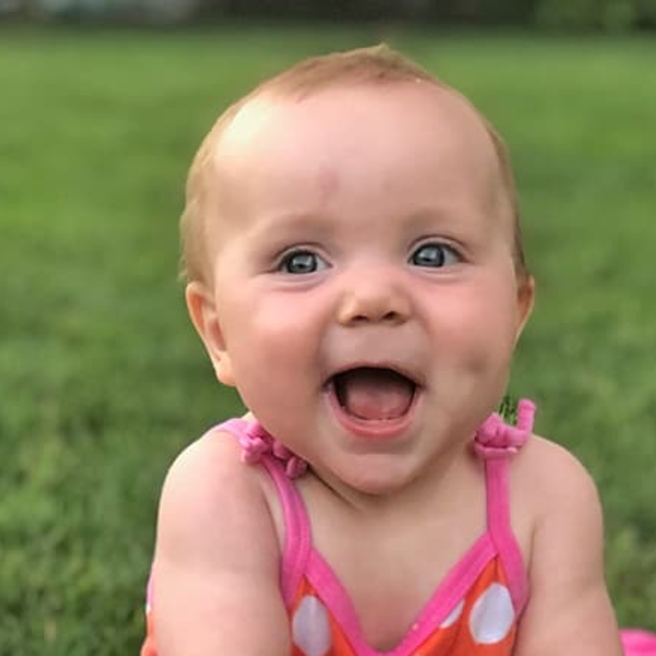What are desmoid tumors?
Desmoid tumors are rare tumors in the United States and usually affect adults. Also known as aggressive fibromatosis, desmoid tumors are considered benign (not cancerous) soft-tissue tumors.
Desmoid tumors typically are a single, firm but rubbery mass, much like scar tissue. The slowly growing mass forms in the body’s connective tissue — often in the arms, legs or trunk, and sometimes in the abdomen or thorax (rib cage).
Sometimes painless, desmoid tumors can be present in the body for a long period of time before they are discovered. Because of this, young adults are more likely than children to be diagnosed with desmoid tumors.
Causes of desmoid tumors
The cause of desmoid tumors is unknown, but there may be a genetic reason for their formation.
Signs and symptoms of desmoid tumors
Symptoms of a desmoid tumor may include:
- Painless swelling or a lump
- Pain or soreness due to the tumor compressing nerves or muscles
- A limp, if the tumor is located in a leg
Testing and diagnosis for desmoid tumors
Symptoms of a desmoid tumor can be difficult to identify in children and teens, so prompt evaluation of any lump or mass is important.
Diagnosing a desmoid tumor begins with a complete medical history and physical examination of your child. A detailed neurological assessment may also be performed.
At Children’s Hospital of Philadelphia (CHOP), clinicians use a variety of diagnostic tests to correctly diagnose desmoid tumors, including:
- Magnetic resonance imaging (MRI), which uses a combination of large magnets, radiofrequencies and a computer to produce detailed images of organs, soft tissues, muscles, ligaments and other structures within the body. Your child is exposed to no radiation during an MRI.
- Needle biopsy, which is a procedure where a doctor places a small needle through the skin and into the lesion to withdraw a small sample of the abnormal tissue. The tissue is analyzed to confirm any findings.
- Ultrasound, which uses sound waves to produce images of organs and soft tissues inside the body. The images are viewed live and continually on a computer screen and can help detect any anomalies.
Treatments for desmoid tumors
At CHOP, experts at the Bone and Soft Tissue Tumor Program at CHOP take a team approach to treatment. Orthopedic and other specialists collaborate to provide your child with individualized care and the best possible outcomes.
Our program is led by Kristy L. Weber, MD, and Alexandre Arkader, MD, nationally renowned surgeons who specialize in treating bone and soft tissues tumors, limb-sparing surgery and reconstructive surgery.
Treatment for desmoid tumors varies, depending on the size, location and rate of growth. Treatment may include a combination of surgery, drug therapy, and in limited cases, radiation therapy.
Surgery
Desmoid tumors can be difficult to remove because they intertwine with the tissues around them. It is not always possible for surgeons to locate the boundaries of the tumor when they are removing it. This makes the rate of recurrence (return of the tumor in the same spot) of a desmoid tumor as high as 70 percent.
The goals of surgery are twofold:
- To remove the tumor
- To restore function at the site of the tumor
Most children with desmoid tumors can be treated with limb-sparing (also known as limb-salvage) surgery. CHOP surgeons regularly perform these complex surgeries and are constantly working to improve outcomes for children with the most difficult-to-treat tumors.
Limb-sparing surgery is performed under general anesthesia. It involves cutting out the tumor and a margin of health tissue surrounding it. In rare cases, your child may need reconstructive surgery after the desmoid tumor has been cut out.
Our orthopedic and plastic surgeons use a variety of reconstructive methods to restore your child’s body function. Reconstructive surgery, if necessary, will occur on the same day the tumor is removed.
Reconstruction may include:
- Skin graft, in which a doctor removes skin from the child’s own thigh or buttocks to cover and protect the area where the tumor was removed
- Rotational muscle flap, in which a doctor uses a child’s own muscle near the surgery site, and rotates it to fill the area where the tumor was removed
- Free muscle flap, in which a doctor uses muscle from somewhere else in the child’s own body, relocates it, and then reconnects the blood vessels in the area where the tumor was removed
Desmoid tumors that appear in the head or neck and require specialized surgery will be treated by a surgeon from the Head and Neck Disorders Program at CHOP.
Surgical safety
Though surgery for soft tissue tumors is highly effective, we understand that any surgery can be a stressful experience for your child and family. At CHOP, we offer a wealth of resources about how to prepare your child for surgery and what to expect during surgery.
Additionally, we employ numerous best practices before, during and after surgery to decrease the risk of infection and increase positive outcomes. For more details about safety protocols at Children's Hospital of Philadelphia, see safety in surgery.
Drug and radiation therapy
Drug therapy and radiation may also be used in the treatment of desmoid tumors. In some cases, these therapies are used in conjunction with surgery.
Drug therapy is becoming more commonly used for large tumors that cannot be easily removed. These are medicines given by mouth, in the vein, muscle or under the skin, to help fight tumors. Drugs are given in low doses and there are a variety of new drugs available to treat this benign tumor.
Radiation therapy uses high-energy waves such as X-rays to kill or shrink tumor cells. It is used less frequently as a treatment for desmoid tumors. At Children’s Hospital, clinicians try to limit the use of radiation therapy to malignant tumors because of the potential side effects in children, such as growth disturbances, joint contractures, scarring and secondary cancers.
Follow-up care
After surgery for a desmoid tumor, your child will remain in the hospital for one or two days. Your child may require pain medication until the surgical site heals, and ongoing physical therapy. Most children are encouraged to resume their regular daily activities — like school, social events and play — as soon as possible.
Your child will need to follow-up with the orthopedic surgeon one to two weeks after surgery, then again every three months for two years post-surgery. Regular monitoring by trained clinicians is strongly encouraged to monitor for possible recurrence of the growth and manage any side effects of treatment.
Desmoid tumors have a high rate of recurrence — even after being successfully treated — so it is important for your child to see a physician regularly. During follow-up visits, imaging of the tumor site with ultrasound or MRI scans may be recommended to closely monitor your child’s health.
Follow-up care and ongoing support and services are available at our Main Campus and throughout our CHOP Care Network. Our team is committed to partnering with parents and referring physicians to provide the most current, comprehensive and specialized care possible for your child.
Outlook
Outcomes for children and young adults treated for desmoid tumors are generally good. These benign tumors do not metastasize to the lung, and in most cases, clinicians can control the spread of the tumor.

Why choose CHOP
CHOP’s pioneering surgeons, expert oncologists and coordinated team provide patients and families with an extensive array of treatment options – all customized to meet your child’s specific needs.
Resources to help
Bone and Soft Tissue Tumor Program Resources
We have compiled web, video and other resources to help you find answers to your questions and help you feel more confident in the care you are providing your child.
Reviewed by Alexandre Arkader, MD

